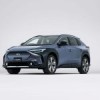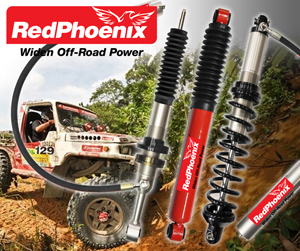BORN FOR THE USA
Volkswagen has unveiled a new SUV concept at the North American International Auto Show in Detroit.
 Called the CrossBlue, it has been developed specifically for the U.S. and Canada, and if it goes into production would sit above the Tiguan and below the Touareg in the Volkswagen SUV line-up.
Called the CrossBlue, it has been developed specifically for the U.S. and Canada, and if it goes into production would sit above the Tiguan and below the Touareg in the Volkswagen SUV line-up.
 The CrossBlue features a plug-in hybrid powertrain that combines a TDI engine with two electric motors, a DSG transmission, and an electric all-wheel-drive system dubbed ‘propshaft by wire’, and offers economy of 2.1 litres per 100 kilometres, or 134.5 mpg.
The CrossBlue features a plug-in hybrid powertrain that combines a TDI engine with two electric motors, a DSG transmission, and an electric all-wheel-drive system dubbed ‘propshaft by wire’, and offers economy of 2.1 litres per 100 kilometres, or 134.5 mpg.
 Painted in ‘CrossBlue Glass Flake’, the concept is 4,987 mm long, 2,015 mm wide, and 1,733 mm high. A wide track of 1,686 mm (front) and 1,696 mm (rear) give it a confident stance on the road, as do 21-inch alloy wheels shod with 235/45 tyres, and flared wheelarches.
Painted in ‘CrossBlue Glass Flake’, the concept is 4,987 mm long, 2,015 mm wide, and 1,733 mm high. A wide track of 1,686 mm (front) and 1,696 mm (rear) give it a confident stance on the road, as do 21-inch alloy wheels shod with 235/45 tyres, and flared wheelarches.
 The CrossBlue has two ‘fuel doors’: one for the diesel tank on the passenger side, and one covering two electrical sockets on the driver’s side. The first socket is to charge the lithium-ion battery and the second can be used to connect electrical devices.
The CrossBlue has two ‘fuel doors’: one for the diesel tank on the passenger side, and one covering two electrical sockets on the driver’s side. The first socket is to charge the lithium-ion battery and the second can be used to connect electrical devices.
 While the CrossBlue concept car is equipped with six individual seats in three rows, in a production version, the second row would have the option of three seats to make it a full seven-seater. Convenient access to the rear seats is assured by sliding second-row seats that can be managed with a single hand movement. Behind the third seating row is a cargo area of 335 litres (length 600 mm). With the third row folded, cargo capacity grows to 815 litres and load length to 1,387 mm, figures that increase to nearly 2,000 litres and 2,230 mm with the middle row stowed. A forward-folding front passenger seat makes for a maximum 3,110 mm load length.
While the CrossBlue concept car is equipped with six individual seats in three rows, in a production version, the second row would have the option of three seats to make it a full seven-seater. Convenient access to the rear seats is assured by sliding second-row seats that can be managed with a single hand movement. Behind the third seating row is a cargo area of 335 litres (length 600 mm). With the third row folded, cargo capacity grows to 815 litres and load length to 1,387 mm, figures that increase to nearly 2,000 litres and 2,230 mm with the middle row stowed. A forward-folding front passenger seat makes for a maximum 3,110 mm load length.
 As soon as the driver starts the CrossBlue, controls for the lights, climate control and four-wheel-drive system emerge from their flush resting positions. The controls have aluminium surrounds: aluminium is one of the predominant interior materials, along with leather and dark-stained banana tree wood accents. In the centre console is a 10.2-inch touchscreen, while there is an Apple iPad Mini in the back of each front head-restraint.
As soon as the driver starts the CrossBlue, controls for the lights, climate control and four-wheel-drive system emerge from their flush resting positions. The controls have aluminium surrounds: aluminium is one of the predominant interior materials, along with leather and dark-stained banana tree wood accents. In the centre console is a 10.2-inch touchscreen, while there is an Apple iPad Mini in the back of each front head-restraint.
 As well as excellent fuel economy, the CrossBlue has impressive performance from a powertrain that produces up to 305 PS and 700 Nm (516 lbs ft): 0 to 60 mph is estimated to take 7.0 seconds, while the top speed is 127 mph, or 75 mph in electric mode. The CrossBlue runs in zero emissions mode at the press of a button or automatically. With a fully charged battery, the CrossBlue can travel up to 14 miles in electric mode in the US test cycle, or 33 km (20 miles) using the European driving cycle. It has a potential range of 661 miles from a combination of the 70-litre fuel tank and battery power.
As well as excellent fuel economy, the CrossBlue has impressive performance from a powertrain that produces up to 305 PS and 700 Nm (516 lbs ft): 0 to 60 mph is estimated to take 7.0 seconds, while the top speed is 127 mph, or 75 mph in electric mode. The CrossBlue runs in zero emissions mode at the press of a button or automatically. With a fully charged battery, the CrossBlue can travel up to 14 miles in electric mode in the US test cycle, or 33 km (20 miles) using the European driving cycle. It has a potential range of 661 miles from a combination of the 70-litre fuel tank and battery power.
 Its 190PS TDI diesel engine is from the new EA288 family, matched to a six-speed DSG dual-clutch automatic transmission. The 9.8 kWh lithium-ion battery lies in the vehicle’s centre tunnel, and powers 40 kW front and 85 kW rear electric motors. The Cross Coupé concept first shown in 2011, and also on display in Detroit, uses a similar powertrain concept. The TDI engine produces 400 Nm (295 lbs ft) from just 1,750 rpm, while the electric motors produce their torque – 180 Nm (133 lbs ft) at the front and 270 Nm (199 lbs ft) at the rear – immediately. Combined, the system can produce up to 700 Nm (516 lbs ft).
Its 190PS TDI diesel engine is from the new EA288 family, matched to a six-speed DSG dual-clutch automatic transmission. The 9.8 kWh lithium-ion battery lies in the vehicle’s centre tunnel, and powers 40 kW front and 85 kW rear electric motors. The Cross Coupé concept first shown in 2011, and also on display in Detroit, uses a similar powertrain concept. The TDI engine produces 400 Nm (295 lbs ft) from just 1,750 rpm, while the electric motors produce their torque – 180 Nm (133 lbs ft) at the front and 270 Nm (199 lbs ft) at the rear – immediately. Combined, the system can produce up to 700 Nm (516 lbs ft).
In E-mode, only the rear electric motor propels the vehicle and the TDI engine is shut off and decoupled. At up to 75 mph, the engine is not engaged as long as the battery has sufficient charge. As soon as there is a need for TDI power, it is coupled to the drivetrain again, within fractions of a second. The battery can be charged by external power sources or by the engine while the vehicle is moving. The driver can switch to a charging mode by pressing another button on the centre console. The TDI engine charges the battery while driving to store enough electrical energy for EV operation later in the journey, for instance in an urban area. There are also a number of other modes: Coasting: When the driver releases the accelerator pedal, the engine and electric motors are decoupled from the drivetrain, provided there is sufficient battery charge. Battery regeneration: When the accelerator is released or the brakes applied, the electric motors act as generators and feed energy recovered from the brakes into the battery. In this case, the TDI is also shut off and decoupled from the drivetrain. Boosting: When more performance is required, the electric motors form an alliance with the TDI engine known as ‘boosting’. In this mode, all four wheels are driven. Off-road (‘propshaft by wire’): All four wheels are driven. In this case the front electric motor (supplied with energy by the TDI engine) operates as a generator and a power source for the electric motor at the rear. TDI only: In this mode, the CrossBlue is a pure front-wheel-drive vehicle.
 “The CrossBlue concept is exactly the right type of vehicle for the U.S. market,” said Jonathan Browning, President and CEO, Volkswagen Group of America. “It combines a truly versatile interior layout with sophisticated Volkswagen design, to give a unique and supremely stylish offering in this segment.”
“The CrossBlue concept is exactly the right type of vehicle for the U.S. market,” said Jonathan Browning, President and CEO, Volkswagen Group of America. “It combines a truly versatile interior layout with sophisticated Volkswagen design, to give a unique and supremely stylish offering in this segment.”
Related Posts :
Category: NEWS














